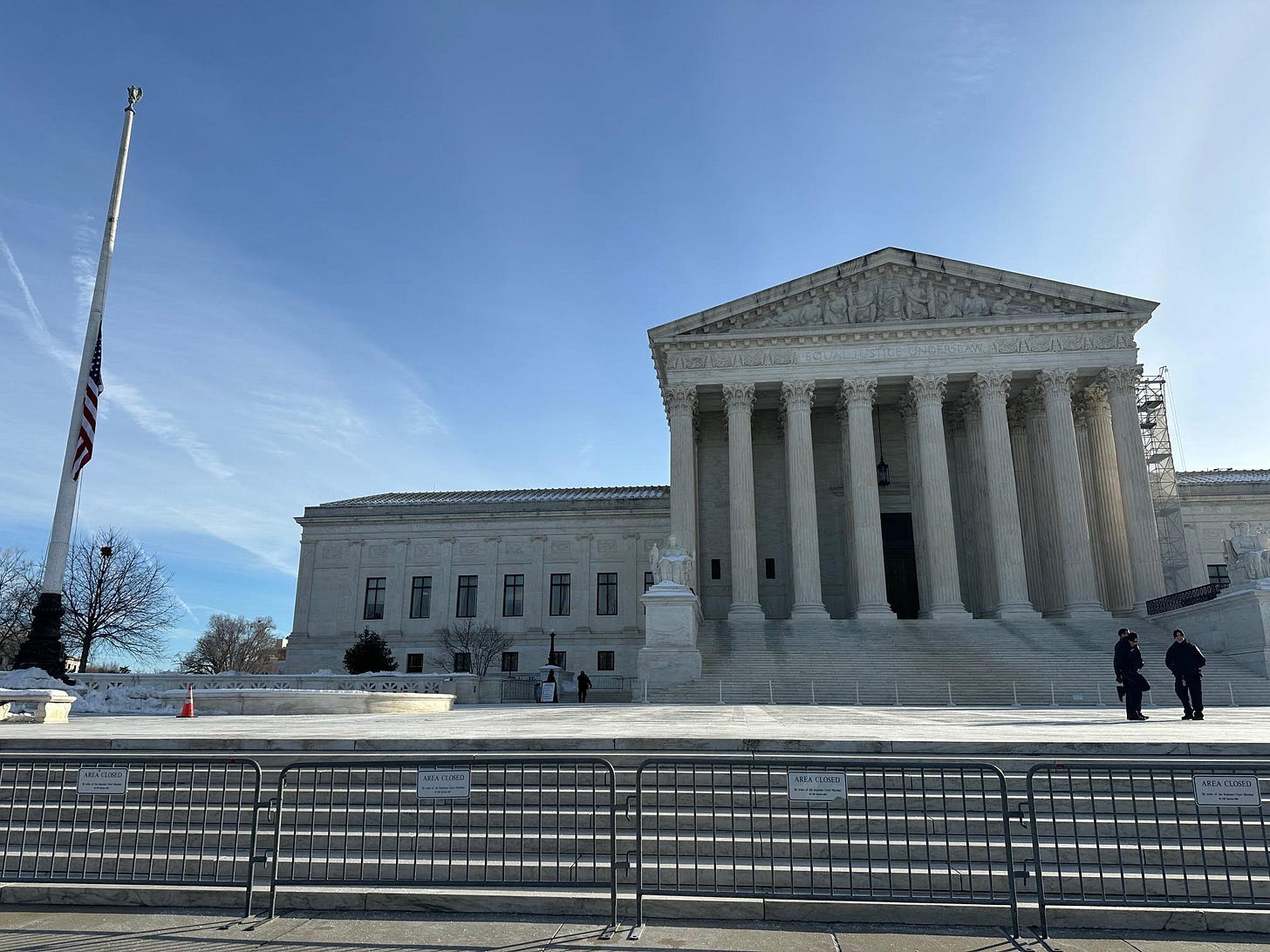TikTok, creators face tough day at SCOTUS, with ban set to go into effect on Jan. 19
Although the application used by 170 million Americans could get a last-minute reprieve, the justices questioned whether the law even regulates speech.
After two-and-a-half hours of arguments on Friday, it appeared more likely than not that the U.S. Supreme Court will not block the law that TikTok’s lawyer said will force it to “go dark” in the United States on January 19.
That is by no means certain, however, and several unique aspects of the case over the future of TikTok and the First Amendment challenge to the Protecting Americans from Foreign Adversary Controlled Applications Act could lead to short-term or longer-term resolutions that keep the application going in the U.S.
Under the law, passed last year by Congress and signed into law by President Biden, TikTok’s ultimate parent company, ByteDance — a foreign company over which China can exert significant control — must sufficiently divest of TikTok by January 19 or app stores and internet hosting services will be barred from providing service to TikTok without facing exorbitant fines.
Although Solicitor General Elizabeth Prelogar faced tough questions — particularly about the government’s claimed compelling interest in preventing covert content manipulation — TikTok’s lawyer, Noel Francisco, and the lawyer representing content creators, Jeffrey Fisher, ultimately faced more fundamental questions about whether the law even regulates speech and, if it does, whether the government’s regulations are impermissible.
Chief Justice John Roberts told both Francisco and Fisher outright that “Congress doesn’t care what’s on TikTok.”
What most of the justices appeared to agree with was the government’s stated concern about how China could use the vast amounts of data gathered by TikTok and accessible to ByteDance. Data collected not only on the 170 million Americans who use TikTok, but also on some of those users’ contacts, was discussed throughout the morning. Justice Brett Kavanaugh and others asked Francisco and Fisher about the government’s arguments that the data could be used 10 or 15 years in the future, as users get different jobs in the military or other government positions, for purposes against American interests.
The government’s other argument — that the law is aimed at preventing covert content manipulation — faced far more skepticism from the court. As Justice Elena Kagan put it at one point to Prelogar, “Content manipulation is a content-based rationale,“ which would subject the law to heightened scrutiny.
TikTok and the creators, in a point argued more forcefully by Fisher for the creators, argue not only that that interest is insufficient, but that it is impermissible. Such a content-based, viewpoint-based restriction, he argued further, “taints” the entire law.
Prelogar said in response that Fisher gets the argument wrong and that, once the court holds that there is a compelling basis in the data collection argument, it can go on to the question of tailoring. Prelogar argued there that the government’s divestiture require is precise tailoring, while TikTok and the creators countered that the government failed to consider alternatives.
It was, however, at a more fundamental level where TikTok and the creators ultimately faced their most difficult time on Friday. Several justices, with no strong ideological divide, expressed finding it hard to see the law as a regulation on speech at all, let alone a regulation on American speech.
It’s “regulation of corporate structure,” Roberts said, and through to Francisco’s rebuttal at a little past 12:30 p.m., neither he nor Fisher appeared to come up with an answer to that that would be convincing to a majority of the justices.
Several justices repeatedly noted that it was ByteDance’s choice not to sell TikTok — not the law itself — that would lead to the January 19 ban going into effect. Although Fisher argued forcefully about Americans’ right to choose their publisher, justices were skeptical of the applicability of the argument here.
One final note, and something that I discussed previously at Law Dork: Donald Trump takes office on January 20, and Francisco went so far as to note that Trump’s coming inauguration could lead to “a different world” — justifying the court preventing the ban from going into effect for a short time until Trump’s new administration can decide how it is going to handle the situation.
That has a certain, practical appeal, but the problem is that that argument requires ignoring constitutional structure. The law was passed by Congress, signed by the president, and set out a timeline that means the ban goes into effect on January 19. Unless the court is poised to agree with TikTok or the creators that the law violates the First Amendment, it is hard to see how — legally — they can temporarily block the law.
In any event, we will know something by January 19. If we get an opinion or order, that obviously would tell us where things go from here. But, given the procedural posture, in which the U.S. Court of Appeals for the D.C. Circuit rejected the challenge to the law, even hearing nothing would tell us something: It would mean the ban goes into effect.
This is a breaking news report. Check back at Law Dork for the latest.




Illuminating analysis (as usual) but I just wanted to note concerning “that that argument requires ignoring constitutional structure” — I would suggest that this Court is quite adept at that very thing … when ideology dictates.
I thought that the law just required the app to be removed from app stores, which should allow existing customers to continue to use it (although likely with limited updates, especially for iPhone customers). For android users, there will likely be a number of sites that provide the app to be side-loaded.